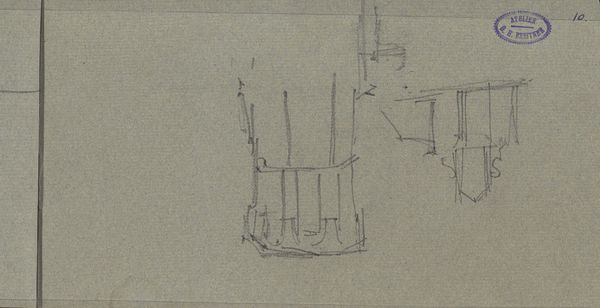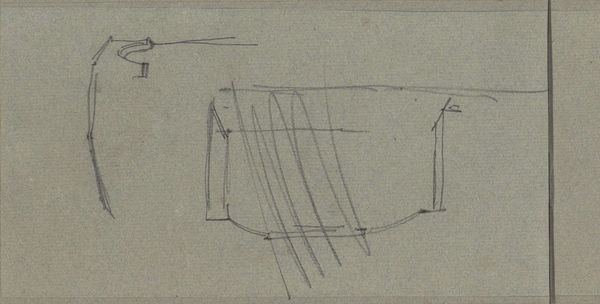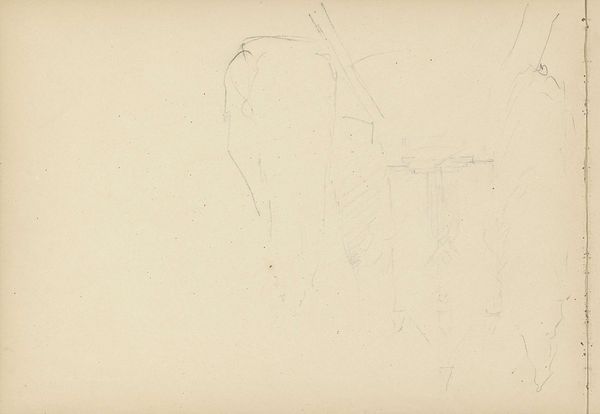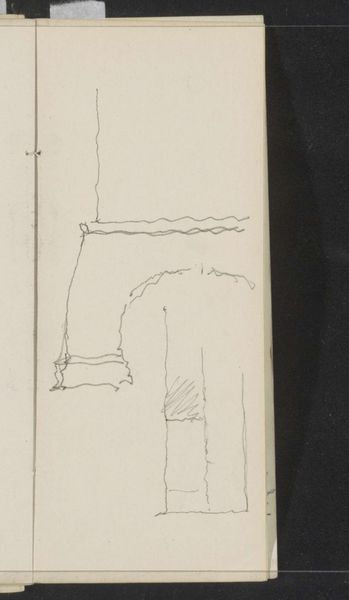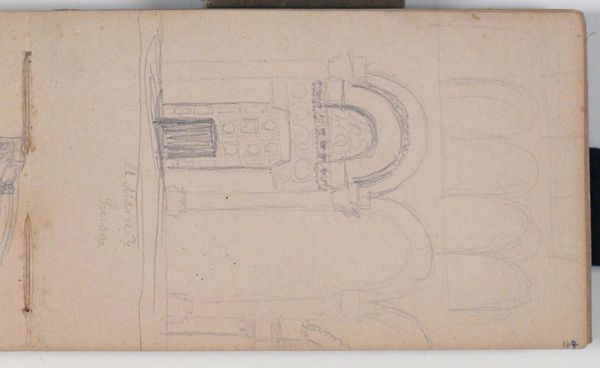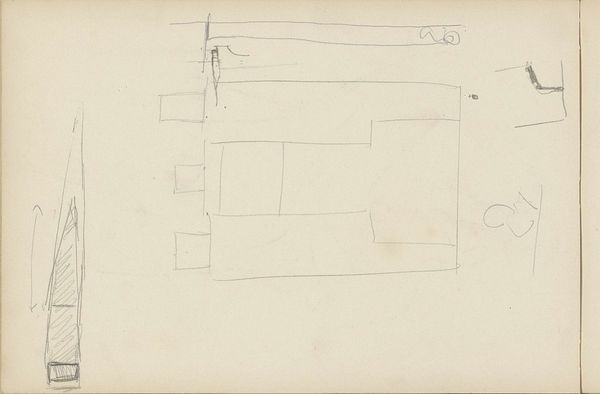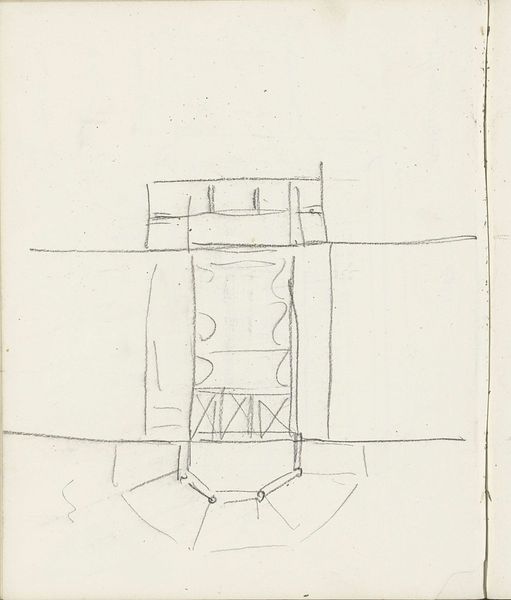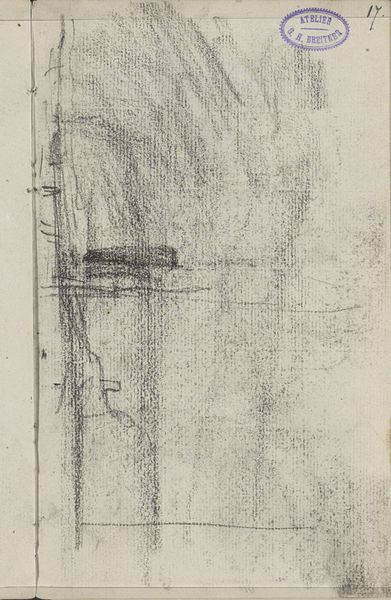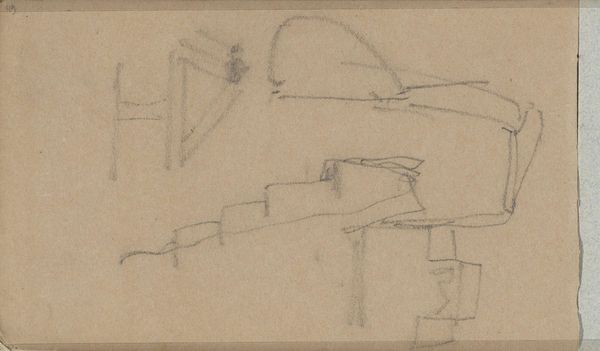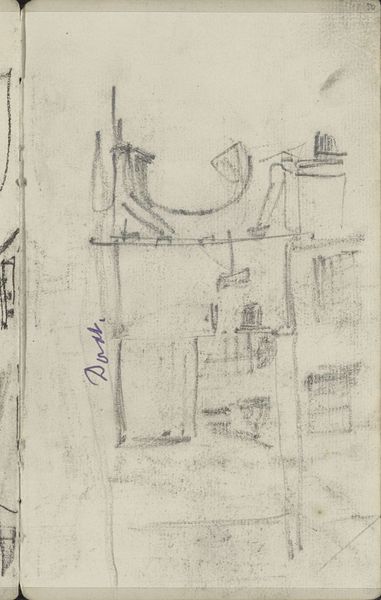
drawing, pencil
#
drawing
#
geometric
#
pencil
#
abstraction
Copyright: Public domain
Curator: At first glance, it appears rather stark, almost desolate. There's a definite geometric precision to it. Editor: Today we're looking at a pencil drawing entitled "Vajda Lajos Két Kapu Pinceablakkal," which roughly translates to "Two Gates with Cellar Window" by Lajos Vajda, created in 1935. The dimensions are 320 by 475 millimeters. Curator: 'Two Gates'? These rigid vertical lines hardly evoke welcoming portals. They read more like barriers or industrial remnants. And this porous rendering, seemingly arbitrary in its distribution across the drawing's tan surface, accentuates that austerity. I can only image what sort of political circumstances Vajda Lajos must have found himself during that time. Editor: Yet, this austere geometry points to a deeper consideration of form. The structural repetition of lines and geometric elements create a kind of architectural grammar. This work goes beyond the depicted object itself, speaking to a broader societal reflection about constructed space during this tumultuous era of encroaching war, displacement, and scarcity in interwar Hungary. The repetitive shapes—those rudimentary vertical rectangles, arranged as though on an assembly line —underscore the artist's critical relationship to manufacturing and the role of artistic production, mirroring that of everyday life in Europe, especially given his Hungarian and Jewish roots. Curator: An interesting perspective. Perhaps that repetitive framework hints at mass production. You make an insightful point; it could also imply confinement. Either way, I find the medium – humble pencil on paper – almost a poignant commentary on the scarcity or deliberate rawness during this time. Editor: Perhaps Vajda selected this medium for its intrinsic value or resource constraints and commentary it has about labor conditions. What this speaks to is Vajda's deliberate selection, showcasing a world stripped bare and constructed using rudimentary tools – be they social or economic. What do we create with our hands when machinery and resources run dry? That seems to be the point, wouldn't you agree? Curator: I can appreciate that idea, understanding the medium not as merely a tool, but as a facet imbued with socioeconomic undertones. This certainly amplifies my appreciation for its message. Editor: It's always enlightening to reassess form not merely as visuality, but also as an outcome and artifact resulting from real-world resources, production techniques, and distribution contexts. Curator: Precisely, an intricate look that moves beyond a work’s immediate imagery to reveal a bigger image about an environment of industrial and societal output.
Comments
No comments
Be the first to comment and join the conversation on the ultimate creative platform.

